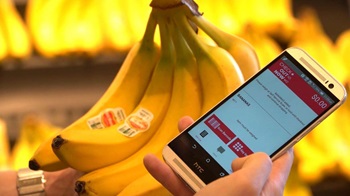By Steve Markenson, Director, Research, FMI

The rapid evolution and implementation of technology in food retail can boost performance on the operational side and enhance engagement on the customer-facing front, not to mention the growing role of ecommerce. Let’s look at some of the ways that technology is changing food retail.
Improving Efficiency
According to The Food Retailing Industry Speaks 2019 report, three-quarters of food retailers are experimenting with new technologies to improve efficiency. Many are using data analytics to assist with assortment planning and replenishment to optimize decision making around pricing and promotion, and to leverage customer data. However, use of Artificial Intelligence (AI) for these activities is still the exception in the food retail world.
One in three food retailers are making significant efforts to use technology to personalize or customize their marketing and shopping experience. Almost one-half of food retailers responding to the Speaks survey plan to increase the number of data analysts and/or digital technologists.
In-Store Experience
Food retailers increasingly embrace and experiment with technology to improve the in-store customer experience and they predict technology will continue to change the in-store food shopping experience. Food retailers are implementing technology in their stores in various ways.
- Scan-and-Go technology is employed to improve operational efficiency and the customer experience. While roughly one-quarter of stores reflected in this year’s Speaks survey already provide shoppers with in-store scan-and-go technology, many others — 44% — are working on providing this.
- Mobile Payments are accepted by almost one-half of food retailers and almost as many are working on making this possible. The goal is to boost the customer experience by enabling a faster and “frictionless” checkout experience.
- Wi-Fi in stores is yet another way for food retailers to use technology to improve the customer experience. Overall, eight in 10 of the stores represented in this year’s Speaks survey are Wi-Fi enabled for customers.
- Apps are a customer outreach platform that utilize technology and allow for personalization. About one-half of food retailers have an app and expect to utilize apps more in coming years.
Ecommerce
Food retailers take a humble approach to their organization’s ecommerce capabilities, as very few claim high levels of ecommerce sophistication. This might explain why most food retailers continue to experiment with their ecommerce strategy. However, many early adopters of ecommerce have grown — and anticipate that they will continue to grow — their online sales. Only half of food retailers responding to Speaks this year have online sales, with these sales represent an average of 1.4% of their total retail sales, but the actual percentages differ widely by retailer. As shoppers continue to grow their online purchases, food retailers have expectations for advances in their ecommerce businesses.
Download Food Retailing Industry Speaks report
Photo Credit: SpartanNash


 Industry Topics address your specific area of expertise with resources, reports, events and more.
Industry Topics address your specific area of expertise with resources, reports, events and more.
 Our Research covers consumer behavior and retail operation benchmarks so you can make informed business decisions.
Our Research covers consumer behavior and retail operation benchmarks so you can make informed business decisions.
 Events and Education including online and in-person help you advance your food retail career.
Events and Education including online and in-person help you advance your food retail career.
 Food Safety training, resources and guidance that help you create a company food safety culture.
Food Safety training, resources and guidance that help you create a company food safety culture.
 Government Affairs work — federal and state — on the latest food industry policy, regulatory and legislative issues.
Government Affairs work — federal and state — on the latest food industry policy, regulatory and legislative issues.
 Get Involved. From industry awards to newsletters and committees, these resources help you take advantage of your membership.
Get Involved. From industry awards to newsletters and committees, these resources help you take advantage of your membership.
 Best practices, guidance documents, infographics, signage and more for the food industry on the COVID-19 pandemic.
Best practices, guidance documents, infographics, signage and more for the food industry on the COVID-19 pandemic.
